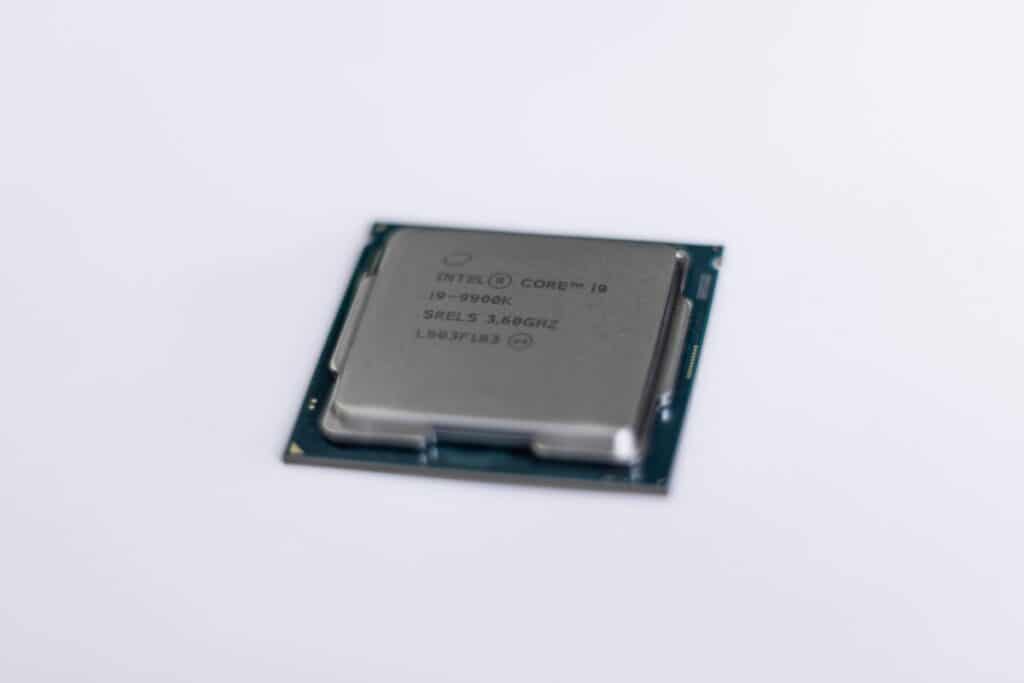
When comparing computers, the speed of the processor is a critical factor. Since the CPU often serves as “the brain” of your computer, you should provide it with care to ensure speed and functionality. So, the question arises what is a good CPU speed?
For gaming, it is mainly about having good single-thread performance. 3.5 GHz to 4 GHz is usually regarded as an adequate processor speed. This speed is suitable for photo editing, students, and simple computing work. However, when it comes to playing the latest games, you may require more CPU speed.
Further, you will know how to improve the CPU speed in this article. You will also discover the factors that affect the processor speed.
How Fast Should a Laptop Processor Be Compared to a Desktop Processor?
The CPU in a laptop is different from the one in a desktop. It is important to note that CPUs can also affect a computer’s hardware, so you should know if you need a portable laptop or a dual-display desktop computer with a high level of performance.
Laptops
Generally, laptops have a less powerful and flexible processor. It’s obvious that laptops are convenient for users who enjoy the mobility of their laptops, but if you need a processor with a high clock speed, it might be better to look into a desktop computer.
These days, laptops are capable of competing with desktops thanks to multicore processors and hyper-threading.
Dual-core processors are common in laptops, which are perfect for most everyday users. Quad-core processors are available in some laptops, which will help you enhance the processing power.
Desktops
Because desktops have powerful hardware, they can generate more power than laptops, which translates to higher clock speeds and greater processing capability.
The larger chassis in a desktop allows the cooler to work better, so the processor can keep working without getting overheated.
Unlike the CPUs on laptops, you can remove the CPUs on desktop computers for servicing. Ultimately, you should decide what you want to do on your computer before choosing the processor speed you’ll need, whether you have a laptop or a desktop computer.
Choose the CPU Speed That Matches Your Need
You either game on your computer or you don’t; you use it every day, or you don’t, you should know your usage. It is easier to choose the right processor when you know your habits.
You will require a 4-core or 8-core processor if you are running multiple applications or playing processor-intensive games. For CPU-intensive tasks like video editing, you will need clock speeds close to 4.0 GHz.
However, for your basic computing needs, you won’t need such a high clock speed. While the CPU is an important component of a computer, it isn’t the only one.
You should look at the other factors as well such as display resolution, memory, disk drive, graphics card, etc. while shopping for a computer. Choosing the right computer to fit your lifestyle is another important consideration.
What Is the Best Choice: A Higher Clock Speed or More Processor Cores?
Your computer’s performance depends on both the processor cores and the clock speed. What does a computer with more processor cores and a very high clock speed mean for its functionality?
An application running on a single core of a high clock speed computer will load and interact efficiently.
Conversely, if your computer has a slower clock speed but more processor cores, each of them may run a little slower, so you can run more applications at once. Processor speed or several cores may not be necessary for everyone.
How to Improve the Processor (CPU) Speed?
This section includes methods to enhance a computer’s processor speed.
Eliminate Unused Programs
You can download various tools and utilities from the internet for various tasks, such as data backup and desktop customization, but they tend to accumulate over time.
Many laptops feel slower in day-to-day usage because they have large collections of programs you do not use anymore.
Over the life of your device, you may have installed many utility programs, such as virus scanners which run automatically at startup, hidden in the background where you cannot see them.
Keeping track of your installed applications and removing those you do not regularly need is a good rule of thumb. To avoid repeating a similar error in the future, uninstall any tools you download for one-off jobs.
Limit Startup Programs
As soon as Windows starts up, many programs will start automatically. Manufacturers often configure their programs to open in the background when you click their icons automatically, so they open right away once you click them.
You should avoid this for programs you rarely or never use unless you use them a lot. It wastes memory and slows your system down, as well as making your computer take longer to boot up.
Thankfully, Windows 10 now allows you to customize which applications run at startup. The Startup selection is found in Settings > Apps > Startup.
You will see a list of programs and services that have the option of running at startup, with information about their impact and an option to enable them. You can turn off any services you don’t want running at all times, and performance will improve, and boot times will decrease.
Remove Bloatware
Old computers aren’t the only ones that have latency problems. Bloatware pre-installed on the laptops of new computers can do the same thing.
The manufacturer sometimes provides its software, although it can include third-party applications pre-installed in commercial distribution agreements.
No matter what you call bloatware or unwelcomed software, it can slow down a computer. They use valuable processing power and memory, just as the old program.
Chances are some of the pre-installed programs, such as Dropbox, are useful. Still, you should consider removing any pre-installed applications that no longer need to be present from a new computer.
Exclude Malware
Nowadays, the internet can spread malicious software extremely easily. Simple download links and malicious email attachments can all cause malware infections.
The malware on your computer is not always something that immediately renders. It can hide for years and spy on you while polluting your computer’s memory. Also, it can cause slowdowns, and unlike startup programs, malware is often difficult to detect.
Keeping your system running without being slowed down by malicious processes can be achieved by installing a free security suite that is set up to protect you from the majority of common threats on the web.
Delete Optional Resources
Whenever your computer shows signs of aging, it is a good idea to scan your files and folders to see if any have been inactive for a while.
Often, this is stored data or old documents, or even temporary files and cookies that can slow your PC down. In addition to CCleaner, another popular tool is Avast’s Registry Cleaner, which cleans potentially undesired files. For Mac users, you can use an app called CleanMyMac by MacPaw.
In 2019, hackers used the app to inject malware into devices following a cyberattack on it. CCleaner, in our opinion, remains an incredibly valuable tool to the extent, and I recommend it.
Defrag the Hard Disk
Fragmentation is often a problem with old mechanical hard drives. When the bits that make up a file are dispersed over the platter’s surface, the result is file fragmentation.
The drive head has to travel over a greater distance, slowing the machine down to read all the portions of the disk. As a result of defragmentation or defragging, all the bits associated with various files are grouped, improving hard drive access speeds simultaneously.
Despite this, solid-state drives are immune to fragmentation since they do not work with spinning platters. It is easy to defragment a hard drive in Windows 10.
Just enter the storage tab in the settings menu, click the ‘optimize drives’ option, and the system will check if the disk needs to be restructured.
This tool provides you with a percentage of how fragmented each drive is when you analyze each drive individually. Afterward, you can defragment your drive to improve its performance and stability.
Turn On Automatic Updates
If you’re unfamiliar with software updates, I wouldn’t normally suggest that you disable them because they’re an effective way to safeguard your system against cyberattacks and compatibility issues.
As a result, you could experience serious security issues if you disable automatic updates. Some situations, however, may be exempt from this rule.
The chances of Steam and Epic Games Store installing multiple large updates and patches behind the scenes are high, for instance, if your work laptop doubles as a gaming device.
Significant updates are also common for Adobe applications. For such large applications, you can turn off automatic updates. You can turn off this feature, so you can only update the software when needed. As a result, these updates will not impede your productivity.
Increase RAM
Add some additional memory to a laptop with 2GB or less memory to get a little more performance. However, it would help if you treated it with caution.
When you’re using Windows 32-bit, the maximum amount of RAM you can have on one computer is 3GB. For example, you only need 3GB of RAM with these systems if two gigabytes and another two gigabytes are added.
A 32-bit operating system has limitations when addressing memory due to its limited address space. More importantly, this is likely not an option for most laptops.
It used to be possible to swap out RAM sticks for repairs and upgrades on laptops that featured removable RAM sticks. Increasingly thin chassis has led manufacturers to solder their RAM directly to the motherboard, making upgrades nearly impossible.
